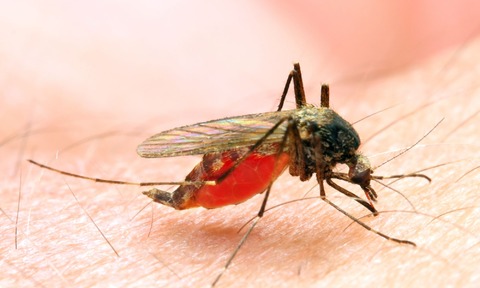Mosquito project overwhelmed by swarm of willing citizen scientists
5 May 2025

Citizen scientists working with the University of Glasgow have amassed more than 700 reports over a year to document the activity of mosquitoes in Scotland.
Project co-leader, professor of infectious disease ecology Heather Ferguson, said:
“Their participation has helped fill large gaps in our understanding of mosquitoes both in Scotland and the UK more generally.
” [This] is allowing us to build a picture of how the biodiversity benefits, and any potential risks, posed by these species will respond to environmental change.”
Members of the public submitted location photos of the insects’ activity throughout the mainland and on islands as far as Shetland as part of the Mosquito Scotland project.
The initiative is run by Glasgow university in cooperation with the MRC-University of Glasgow Centre for Virus Research (CVR), UK Health Security Agency (UKHSA) and the UK Centre for Ecology & Hydrology (UKCEH), together with input from Public Health Scotland, the Scottish Government and environmental agencies.
Set up in 2023 with the aid of £1.5 million in grant from DEFRA and UK Research & Innovation, Mosquito Scotland was the first attempt to assess the threat of mosquito-based pathogen emergence in the country and how this might be affected by future climate change.
Consultant in veterinary public health at Public Health Scotland professor Dominic Mellor explained the value of the amateur scientists’ contribution in fulfilling the project’s aims.
These included enabling assessment of species’ prevalence and distribution, as well as current and potential disease carrying.
"The citizen science aspects are providing detailed information, previously lacking, about the presence and diversity of mosquito species that are being found across Scotland,” said Mellor.
“Such information is invaluable in helping us understand and prepare appropriately for potential risks to public health that might arise as a result of climate change."
The work confirmed the presence of 21 separate species and peal populations in spring and summer. But observers also reported sightings as late as December and as far north as the Shetland isles – the most northerly UK ever reported, say academics.
And while woodlands remain the most common locations, particularly pine forests, large urban centres such as Glasgow report insects present indoors.
Project co-leader, MRC-University of Glasgow (CVR) senior research fellow Dr Emilie Pondeville, described the public contributions as “invaluable for understanding mosquito biodiversity in Scotland and assessing the potential risks these species may pose as the climate changes”.
Of the more than 20 species in Scotland, three – Aedes cantans, Aedes punctor and Aedes rusticus – are attributed as the main source of nuisance biting.
Dr Georgia Kirby, who headed the citizen science survey, admitted there had been concern about the potential accuracy of the reports, especially in areas where Scotland’s infamous midges are most active.
She said: “There were several areas of Scotland where we received lots of reports of bites but very few photos of the culprits – understandably, as most people don’t want to hold still for a photo while they’re being bitten.
“We had suspected that midges or clegs could be responsible, but in our follow-up investigations we invariably found that these locations were swarming with mosquitoes – proving that people in Scotland are good at recognising them and distinguishing them from more familiar insects.”
Pic: Shutterstock (Kletr): A mosquito from the more deadly sub-Saharan Anopheles genus

